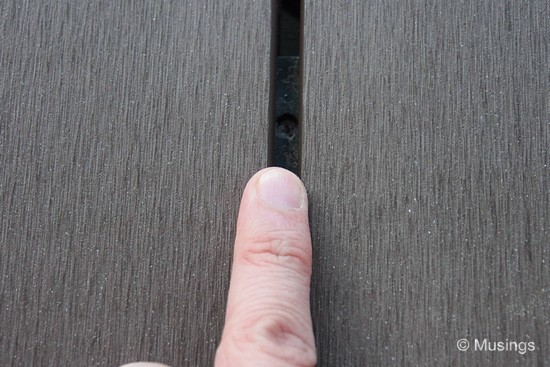The third – and probably last post on our Minton renovation one year on – unless there are more things to say later in the years to come! Previous post here.
Children’s Bedroom double-beds: this was one of the key design features in our renovation project 18 months ago, and while Peter hasn’t moved into the room yet (he still sleeps each night in his cot currently in the Study room), the upper bed here is at least one of his frequent play areas. The invisible grills in the room have given us relative peace of mind since without them, it really wouldn’t take any effort to climb from the upper bed out of the window. The multiple storage bays built into the bedroom have also been really helpful in keep both children’s clothes out of sight too.
+1/Study Room configuration: we’re waiting for Peter to ‘graduate’ from his cot so that he can vacate the +1/Study Room. After which the first thing that’s going in is one of those large bean bags.:)
Decking: we didn’t write about our decking considerations and final decisions made during our 2014 renovation project, but deciding on the basic material type, material color and also vendor to go with was one of the harder renovation decisions we made last year. Briefly, there are two broad types of decking material: natural wood (e.g. ironwood, Chengal, teak) and wood plastic composites, which basically is a synthetic wood type.The considerations we had in mind included:
The amount of direct sunlight that would hit the decking
The amount of rain that will hit the decking during each year end’s monsoon
The kind of furniture and also usage that decking would be put through
How much maintenance we were prepared to keep up with the decking’s outward appearance
How the decking would be installed
Cost (of course)
From anecdotal observations, most people seem to prefer natural wood decking since it doesn’t have that odd artificial look that’s inherent in WPCs – you know, analogous to computer-generated faces against real human faces that we see in the most Terminator film – and with natural wood, you can at least re-sand and varnish periodically and the decking would look like new again. Still, we read and also saw through pictures worrying on either side, and don’t think we could really finally say which material type is better all-round. We finally decided on an Australian-branded decking type sold and installed by a local reseller, on account of the very long warranty the reseller was providing, the overall package price, method of installation (no drilling involved), and also that the method of installation permitted wider than normal gaps. A note on the later: we went with a larger than normal gap of 5mm between planks. It resulted in a somewhat less pleasing look visually, but also provided a much better water drainage system when the inevitable monsoon rain cycle begins.

More than 18 months, and the decking has fared pretty well with a few caveats. None of the planks have warped, chipped, broken etc. but there has been surface scratches and plant acid burns into the material as a result of our usage – basically the children’s toy vehicles running forcefully over the decking, and the many potted plants excreting fluids that over time burn into the deck planks. Not enough for the decking to look unsightly at all, but I guess it’s just the nature of the material.
Solar Film: the solar film still looks solidly in place, and we don’t even notice that it’s there anymore. And the apartment interior is still reasonably bright enough for us.
Recent comments